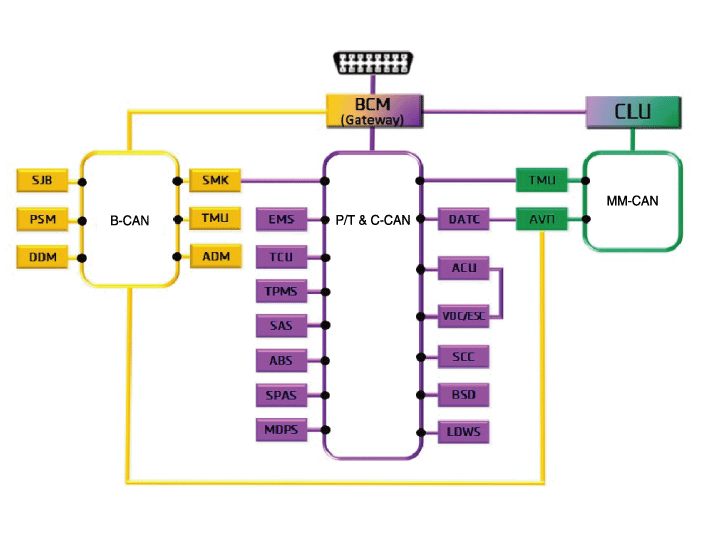Kia Sportage: Tire Pressure Monitoring System / TPMS Receiver Description and operation
Kia Sportage QL (2015-2025) Service Manual / Suspension System / Tire Pressure Monitoring System / TPMS Receiver Description and operation
| Description |
| 1. |
Mode
|
| 2. |
Overview
|
Communication Network Diagram

| Operation |
| 1. |
General Function
|
| 2. |
General Conditions to Learn New Sensors:
|
| 3. |
General Conditions to Un-Learn a sensor that is removed :
|
 TPMS Sensor Repair procedures
TPMS Sensor Repair procedures
Removal
1.
Remove the valve core and deflate the tire.
2.
Remove the side of the tire bead area from the wheel using tire changing
...
 TPMS Receiver Repair procedures
TPMS Receiver Repair procedures
Removal
1.
Disconnect the negative (-) battery terminal.
2.
Remove the glove box hosing.
(Refer to Body - "Glove Box Hosi ...
Other information:
Kia Sportage QL (2015-2025) Service Manual: Radiator Components and components location
Components 1. Reservoir tank 2. Radiator reservoir hose 3. Radiator upper bracket [RH] 4. Radiator upper bracket [LH] 5. Radiator 6. Radiator upper hose 7. Radiator lower hose 8. Radiator lower mounting insulator [RH] 9. Radiator lower ...
Kia Sportage QL (2015-2025) Owners Manual: Battery saver function
The purpose of this feature is to prevent the battery from being discharged if the lights are left in the ON position. The system automatically shuts off the parking lights 30 seconds after the ignition key is removed and the driver’s door is opened and closed. With this feature, the ...
Copyright © www.ksportagegl.com 2015-2025

